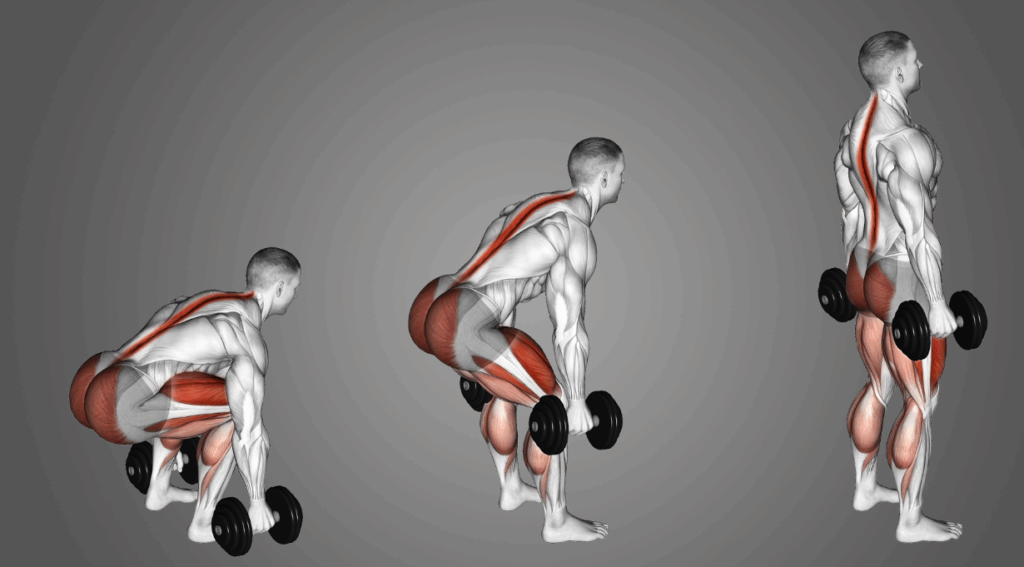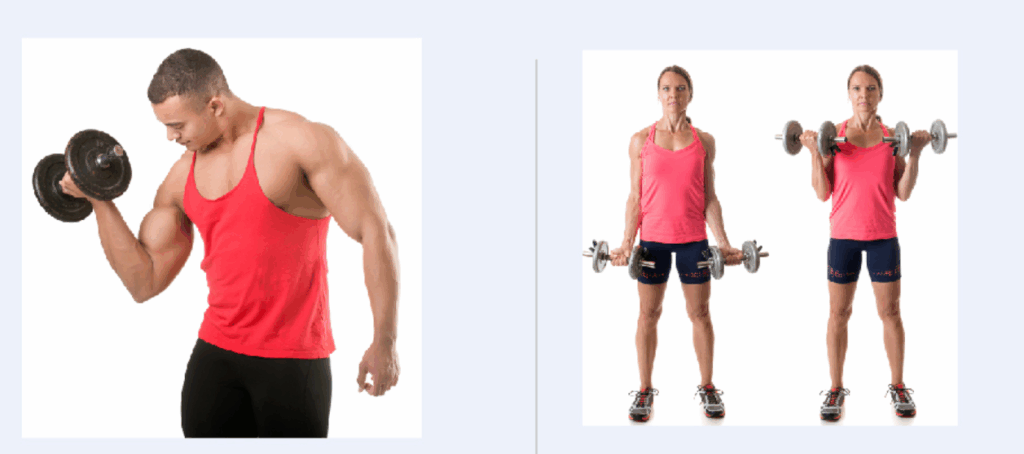Choosing between barbell and dumbbell training is not simply a matter of preference or equipment availability. It is a question rooted in biomechanics, training intent, and how each method aligns with individual strength development goals. While both options can lead to impressive arm gains, they do so through different mechanisms involving load, range of motion, and muscle control.
Muscle Activation and Biomechanics
Barbell exercises like barbell curls and close-grip bench presses can carry heavier loads. It creates high muscle tension and mechanical stress that promotes muscle hypertrophy. But a fixed grip on a barbell inhibits natural joint motion and can cause discomfort at the wrists or elbows if form is compromised.
Dumbbell exercises allow for greater motion and allow for natural wrist and shoulder rotation. This adaptation reduces joint strain and may improve muscle fiber recruitment across angles. You activate more stabilizing muscles with dumbbells, especially during unilateral exercises.

Unilateral vs Bilateral Benefits
The dumbbells give each arm independent work. They fix imbalances and improve neuromuscular coordination in favor of one side or with previous injuries. Unilateral training benefits both aesthetics and functional strength and control.
The barbell is more effective for bilateral lifts that emphasize maximum force output. With movements such as the barbell curls or skull crushers, both arms can push or pull simultaneously to cause overload and mass build-up. These compound moves build foundational strength and are especially useful in early training.

Progressive Overload Potential
Barbells allow lifters to apply progressive overload by easily adding weight. Lifters can add plates in small increments for steady, measurable strength gains. That makes them ideal for building mass in the biceps and triceps in exercises like curls and close-grip presses, targeting both heads of the arm muscles.
Dumbbells provide greater control during each repetition, despite a slightly lower loading potential. They are used for training where precision and form matter more than raw load. Though they do not permit rapid weight gains, dumbbells offer a more refined route to improving time under tension and isolation.
Exercise Versatility and Isolation
The more varied movements in dumbbell exercises include isolation exercises for individual arm parts. For better control and range of motion, preacher curls, hammer curls, and triceps kickbacks are better with dumbbells.
Barbell exercises involve more compound engagement, often targeting the shoulders, back, or chest, depending on the movement. That renders them less specialized but effective in overall strength development. But skull crushers, drag curls, and EZ-bar curls prove that properly programmed barbells can still provide meaningful isolation.
Risk of Injury and Joint Stress
Its fixed grip can cause repetitive stress to the wrists, elbows, and shoulders when used poorly or without adequate recovery. Common overuse injuries include tendonitis in routines that are entirely barbell-based.
With dumbbells, natural wrist and elbow alignment reduces joint torque. For beginners or anyone concerned about joint health, dumbbells are often safer. They also offer greater flexibility during movement, reducing the chance of repetitive strain injuries over time.

Which Tool Works Best for Your Goals?
Barbells are superior for building mass and strength during the early or intermediate phases of training. They promote progressive overload and reinforce compound movement patterns that build on a solid foundation.
These dumbbell exercises refine shape, develop muscular balance, and introduce variation to prevent plateaus. They are adaptable and fit for recovery phases, corrective training, or advanced routines with more isolation and control.
Frequently Asked Questions
Which builds bigger biceps faster, barbell curls or dumbbell curls?
Barbell curls generally allow for heavier loading, which can stimulate faster initial size gains in the biceps. However, dumbbell curls provide a better range of motion and control, which can improve overall muscle shape and symmetry.
Are dumbbells safer for beginners trying to grow their arms?
Yes, dumbbells are typically safer for beginners due to their joint-friendly design. They allow natural wrist and elbow movement, making them ideal for learning proper form and control.
Can I train arms effectively using only barbells or only dumbbells?
Yes, effective arm development is possible with either tool when programmed correctly. Barbell-only routines can emphasize strength and overload, while dumbbell-only routines can focus on isolation and control. For optimal gains, combining both is recommended.
Which tool gives a better mind-muscle connection for triceps?
Dumbbells generally provide a better mind-muscle connection for triceps because they allow for more controlled movement and a full range of motion. Exercises like triceps kickbacks or overhead dumbbell extensions target the triceps more precisely than many barbell movements.
How should I alternate between barbell and dumbbell exercises in a weekly split?
A common approach is to start the week with heavier barbell movements to take advantage of fresh energy and focus. Midweek or secondary sessions can include dumbbell exercises to emphasize control, isolation, and recovery. This balance supports strength and hypertrophy without overtaxing joints.









